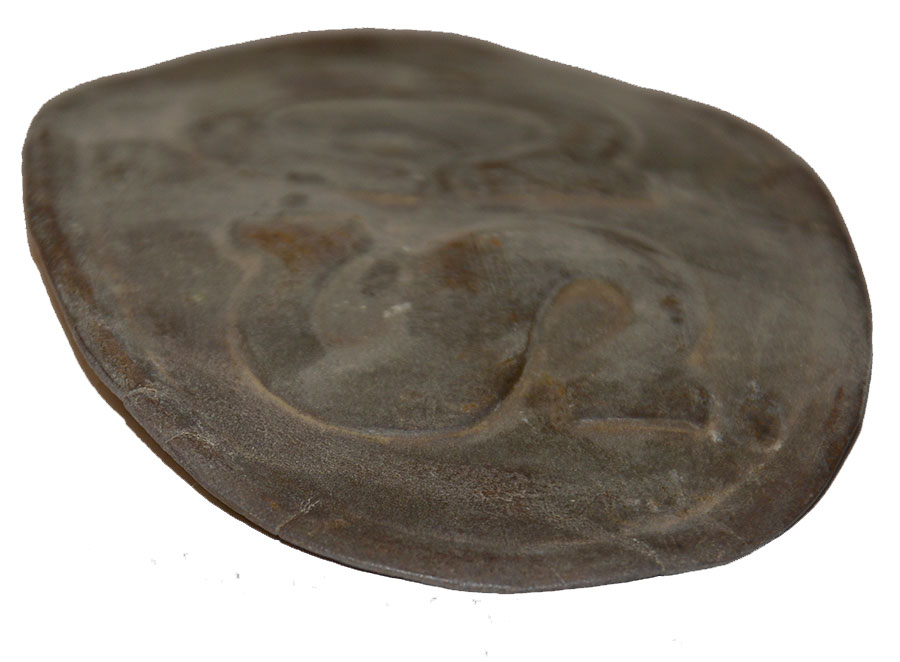site search
online catalog
VERY RARE CONFEDERATE “ROPE BORDER” BELT PLATE

Hover to zoom





$3,100.00 SOLD
Quantity Available: None
Item Code: 1202-260
Dug condition stamped brass oval “rope border” belt plate. Unlike their US counterparts, these were not lead filled. These are not commonly found and can most often be traced back to the contractor Magee and George of New Orleans.
The firm of Magee & George of New Orleans produced a die stamped “CS” plate that is known as the “rope border” style because of the beaded inner ring around the perimeter. It was made of heavy gauge sheet brass, had no solder filling, and its hooks were of scraps cut from the base material. When New Orleans fell, this production source ended. Most issues of these went to Rebs in the western and Trans-Mississippi theaters, although a very few made their way east, as archaeological recoveries show. Before the Battle of Pea Ridge in March 1862, a member of the famous Missouri Brigade recalled receiving “…belts with CS on them,” which records show were part of the Magee & George output.
This example is in dug condition, recovered from an undetermined western theatre site several decades ago. While it is curved, it measures 3.5” x 2.25”. Its brass hooks are gone, with remnants of the soldiering remaining. The rope border is lost to exposure, but some faint remnants are noted.
Another essential piece for the Confederate and Civil War collector. [cm][ph:L]
~~~~~~~~~~~~~~~~~~~~~~~~~~~~~~~~~~~
THIS ITEM, AS WITH ALL OTHER ITEMS AVAILABLE ON OUR WEB SITE,
MAY BE PURCHASED THROUGH OUR LAYAWAY PROGRAM.
CLICK HERE FOR OUR POLICIES AND TERMS.
THANK YOU!
Inquire About VERY RARE CONFEDERATE “ROPE BORDER” BELT PLATE
Most Popular
Historical Firearms Stolen From The National Civil War Museum In Harrisburg, Pa »
Theft From Gravesite Of Gen. John Reynolds »
Selection Of Unframed Prints By Don Troiani »
Fine Condition Brass Infantry Bugle Insignia »
Large English Bowie Knife With Sheath 1870’S – 1880’S »
Imported (Clauberg) Us Model 1860 Light Cavalry Officer's Saber »
featured item
CONFEDERATE SURGEON'S KEPI FOUND IN SOUTH CAROLINA
This cap was discovered in a Civil War period home in Charleston SC near "The Battery" neighborhood not many years ago. When found the cap needed a few minor repairs but it otherwise remains untouched as found and in marvelous condition! The body of… (1130-09). Learn More »


